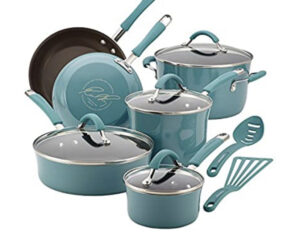The Centers for Disease Control and Prevention states that “heart disease” refers to several types of heart conditions. The most common type of heart disease in the United States is coronary artery disease (CAD), which affects the blood flow to the heart. Decreased blood flow can cause a heart attack.
High Blood Pressure is one risk factor for heart disease that we’ll explore today:
Blood Pressure is the pressure of blood pushing against the walls of your arteries. Arteries carry blood from your heart to other parts of your body.
Blood pressure normally rises and falls throughout the day, but it can damage your heart and cause health problems if it stays high for a long time. Hypertension, also called high blood pressure, is blood pressure that is higher than normal.
In 2017, the American College of Cardiology and the American Heart Association published new guidelines for hypertension management and defined high hypertension as a blood pressure at or above 130/80 mmHg. Stage 2 hypertension is defined as a blood pressure at or above 140/90 mmHg. 1
| Blood Pressure Category | Systolic Blood Pressure | Diastolic Blood Pressure | |
|---|---|---|---|
| Normal | <120 mmHg | and | <80 mmHg |
| Elevated | 120-129 mmHg | and | <80 mmHg |
| Hypertension | |||
| Stage 1 | 130-139 mmHg | or | 80-89 mmHg |
| Stage 2 | ≥140 mmHg | or | ≥90 mmHg |
- Having hypertension puts you at risk for heart disease and stroke, which are leading causes of death in the United States.2
- In 2019, more than half a million deaths in the United States had hypertension as a primary or contributing cause.2
- Nearly half of adults in the United States (47%, or 116 million) have hypertension, defined as a systolic blood pressure greater than 130 mmHg or a diastolic blood pressure greater than 80 mmHg or are taking medication for hypertension.3
- Only about 1 in 4 adults (24%) with hypertension have their condition under control.3
- About half of adults (45%) with uncontrolled hypertension have a blood pressure of 140/90 mmHg or higher. This includes 37 million U.S. adults. 3
- About 34 million adults who are recommended to take medication may need it to be prescribed and to start taking it. Almost two out of three of this group (19 million) have a blood pressure of 140/90 mmHg or higher.3
The American Heart Association provides a list of recommendations to help us begin to make changes today to improve and manage blood pressure:
- Know your numbers, check your blood pressure regularly
- Eat a well-balanced diet that’s low in salt
- Limit alcohol
- Enjoy regular physical activity
- Manage stress
- Maintain a healthy weight
- Quit Smoking
- Take medications properly
- Work together with you doctor
To access the full article, click here: https://www.heart.org/en/health-topics/high-blood-pressure/changes-you-can-make-to-manage-high-blood-pressure
Join the discussion! We’ve had tremendous outpouring of community support, feedback, and great tips. We’d love to hear from you in the comments below (and you’ll even earn 5 bonus points each day, if you are logged into your Go! account and share).
(Please note, your first comment on Go! GC is manually approved to prevent spam. After your comment is approved, you will automatically be awarded bonus Prize Points. Once you have one comment approved, all future comments will be automatically approved.)
Sources:
- Whelton PK, Carey RM, Aronow WS, Casey DE, Collins KJ, Dennison C, et al. 2017 ACC/AHA/AAPA/ABC/ACPM/AGS/APhA/ASH/ASPC/NMA/PCNA Guideline for the prevention, detection, evaluation, and management of high blood pressure in adultsexternal icon. Hypertension. 2018;71(19):e13–115.
- Centers for Disease Control and Prevention, National Center for Health Statistics. About Multiple Cause of Death, 1999–2019. CDC WONDER Online Database website. Atlanta, GA: Centers for Disease Control and Prevention; 2019. Accessed February 1, 2021.
- Centers for Disease Control and Prevention. Hypertension Cascade: Hypertension Prevalence, Treatment and Control Estimates Among U.S. Adults Aged 18 Years and Older Applying the Criteria from the American College of Cardiology and American Heart Association’s 2017 Hypertension Guideline—NHANES 2015–2018external icon. Atlanta, GA: U.S. Department of Health and Human Services; 2021. Accessed March 12, 2021.
- Harvest Hub Box Number #1 Was A Huge Success! - July 22, 2024
- Pickleball Courts Are Poppin! - July 18, 2024
- Let’s Go Garrett County! - July 18, 2024












Thanks.
Great information!
High blood pressure is a silent killer. We all need to keep a check on our blood pressures routinely.
Great information!
This is good information.
Great information this month!
Great information! Thank you!
I just sat on a training that mentioned dash diet in case anyone was interested it’s fir hypertension
https://www.mayoclinic.org/healthy-lifestyle/nutrition-and-healthy-eating/in-depth/dash-diet/art-20048456
Good info. Make small changes.
Get big benefits in the long run.
another bit of great and very important info
This is good information to share with family.
Great information! Thanks.
Sharing information is key.
Exercise is my key for managing healthy heart behaviors.. Thanks for great info.
This is Valuable information.